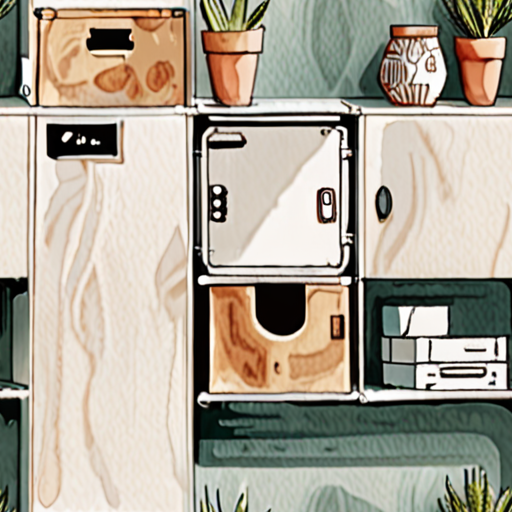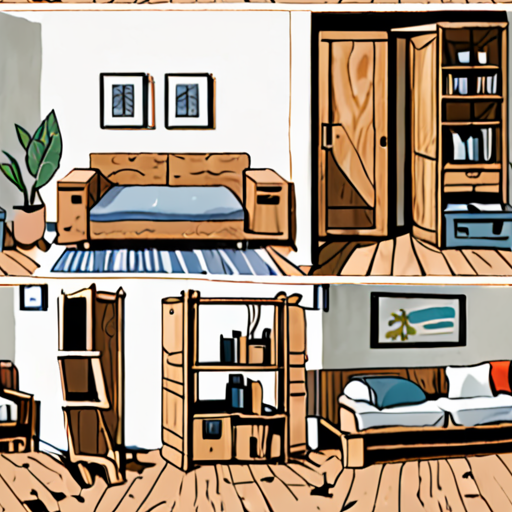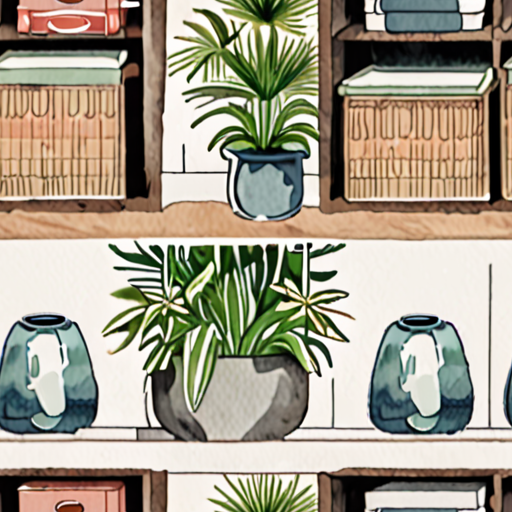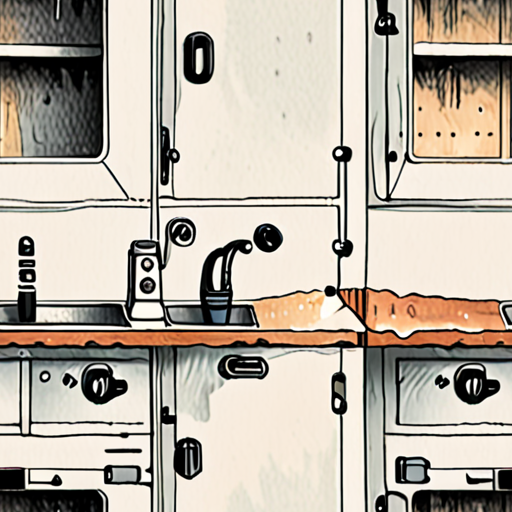Living in a small space can often feel overwhelming, especially when it comes to storing your belongings. With limited room to spare, finding creative storage ideas becomes a top priority. Whether you’re dealing with cluttered closets, cramped kitchens, or tiny bathrooms, there are numerous innovative solutions to help maximize your space and keep your home organized. From clever hacks for small apartments to DIY projects for a budget-friendly approach, we’ll explore the most effective storage ideas for small spaces, providing you with practical tips and inspiration to transform your living area into a peaceful and functional oasis.

Organizing a Lot of Stuff in a Small Space
I’ve got a ton of stuff crammed into my tiny apartment, and I’m struggling to keep everything organized.
- First things first, let’s talk about decluttering. Get rid of anything you don’t need or use regularly. Go through each room and sort items into three piles: keep, donate/sell, and throw away.
- Next, consider investing in some storage solutions. Look for multi-functional furniture pieces that can help maximize your space, such as a storage ottoman or a coffee table with built-in storage.
- Utilize vertical space by installing shelves or hooks on walls. This will help keep floors and surfaces clear and make the most of your ceiling height.
- Make the most of corners by using corner shelves or baskets. These can be great for storing items like books, linens, or cleaning supplies.
- Consider implementing a “one in, one out” policy to prevent clutter from building up again in the future.
- Lastly, establish a maintenance routine to keep your space organized. Set aside time each week to tidy up and put things back in their designated places.
Maximizing Storage in Small Spaces
When it comes to maximizing storage in small spaces, there are several options to consider:
- Underbed storage containers: These can be great for storing items like out-of-season clothing, bedding, or luggage.
- Over-the-door storage racks: These can be used to hang items like jackets, bags, or cleaning supplies.
- Stackable plastic bins: These can be used to store items like toys, linens, or kitchen utensils.
- Magnetic boards: These can be used to store items like spices, keys, or reminders.
Tips for Maintaining a Clutter-Free Space
Staying organized requires effort and commitment, but it’s worth it in the long run. Here are some tips for maintaining a clutter-free space:
- Schedule regular tidying sessions to keep your space organized.
- Establish a “home” for each item to prevent clutter from building up.
- Practice the habit of putting things back in their designated place after use.
- Consider implementing a “no clutter zone” in high-traffic areas.
Creating Storage with No Space
I’m always looking for ways to maximize my living space, and I’ve learned that sometimes the smallest areas can hold the biggest potential.
- Narrow stretches of walls are perfect for installing floating shelves, which can store everything from cookbooks to kitchen utensils.
- Utilize vertical space by installing floor-to-ceiling shelves or storage units that go up to the ceiling.
- Consider using wall-mounted hooks for hanging items like bikes, bags, or accessories.
- Invest in multi-functional furniture pieces, such as ottomans with storage or coffee tables with built-in shelving.
- Make the most of corners by installing corner shelves or baskets that can store items like cleaning supplies or linens.
- Don’t forget about the ceiling – install a storage loft or a pulley system to store infrequently used items like luggage or seasonal decorations.
- Get creative with repurposed items, such as turning an old ladder into a bookshelf or using mason jars as vases and storage containers.
- Maximize closet space by using double rods, stackable shelves, or shoe organizers with pockets.
- Install a pegboard on a wall or in a closet to hang items like tools, accessories, or bags.
- Use under-bed storage bins or drawers to keep items like out-of-season clothes, bedding, or linens organized and out of sight.
- Consider investing in a Murphy bed or a fold-down desk to free up floor space during the day.
- Utilize the space behind doors by installing over-the-door storage racks or hooks.
- Get inspired by looking at storage solutions online or in magazines, and don’t be afraid to think outside the box when it comes to maximizing your space.
By implementing these creative storage solutions, you’ll be able to turn even the smallest areas into functional and stylish spaces that reflect your personality.

Dealing with Lack of Storage Space
I’m always looking for ways to maximize my storage space without sacrificing style or functionality.
- Purge Unwanted Items
- Invest in Multi-Functional Furniture
- Utilize Vertical Space
- Optimize Closet Organization
- Consider Off-Site Storage Options
Purge Unwanted Items
Start by decluttering your space and getting rid of items you no longer need or use.
- Sort items into categories (e.g., keep, donate, sell, discard)
- Be ruthless – if you haven’t used it in a year, it’s probably safe to get rid of it
- Consider hosting a garage sale or selling items online
Invest in Multi-Functional Furniture
Choose furniture pieces that serve multiple purposes to save space and reduce clutter.
- Storage ottomans or coffee tables with built-in storage
- Sleeper sofas or murphy beds
- Desk with built-in shelving or cabinets
Utilize Vertical Space
Make the most of your walls by installing shelves, hooks, or storage units.
- Install floating shelves or ledges for decorative items
- Use wall-mounted hooks for hanging items like bikes, bags, or accessories
- Invest in a pegboard for hanging tools or accessories
Optimize Closet Organization
Maximize your closet space by implementing a customized organization system.
- Invest in a double rod or triple rod for increased hanging space
- Use stackable shelves or drawers for storing folded items
- Implement a shoe organizer or over-the-door storage rack
Consider Off-Site Storage Options
If you’re struggling to find space in your home, consider renting a storage unit or using off-site storage services.
- Research local storage facilities and compare prices
- Choose a facility with secure access and climate control
- Consider portable storage containers for temporary needs

Organizing Your DIY Space
I’m always excited to share my favorite ways to keep my DIY space organized and clutter-free.
- Basket Storage Solutions
- Craft Supply Organization Tips
- Label Your Containers
- Utilize Vertical Space
- Purge Regularly
- DIY Storage Hacks
- Repurpose Old Crates
- Use Magnetic Boards
- Install a Pegboard
- Additional Tips
- Scheduling Regular Clean-Ups
- Investing in Multi-Purpose Tools
One of my go-to methods for storing larger craft supplies is using baskets. I love how stylish and functional they are! Not only do they keep my supplies organized, but they’re also pretty enough to display on shelves or rolling carts.
When it comes to organizing smaller craft supplies, I swear by these clever ideas:
Labeling your containers helps me quickly identify what’s inside, saving me time and reducing stress.
Making the most of vertical space is crucial in small DIY spaces. I use wall-mounted shelves and hooks to maximize storage capacity.
Regularly purging unnecessary supplies keeps my workspace clutter-free and ensures I have room for new projects.
Here are some genius DIY storage hacks to try:
Upcycling old crates into storage bins is a fantastic way to reduce waste and add character to your DIY space.
Magnetic boards are perfect for storing small metal items like scissors, pins, and beads.
A pegboard is an excellent solution for hanging tools, accessories, and other frequently used items.
Remember to stay organized by:
Set aside time each week to tidy up your DIY space and maintain its organization.
Having multi-purpose tools reduces clutter and makes it easier to switch between projects.
Packing Household Items for Storage
I’m excited to share my expertise on how to pack household items for storage, a crucial step in preparing your belongings for a move or long-term storage.
- Step 1: Prepare Your Belongings
- Step 2: Gather Packing Supplies
- Step 3: Pack Non-Essential Items First
- Step 4: Protect Fragile Items
- Step 5: Label and Organize Boxes
- Step 6: Pack Electronics and Cords
- Step 7: Pack Clothing and Linens
- Step 8: Pack Kitchen Items
- Step 9: Pack Bathroom Items
- Step 10: Final Check
Before packing, sort through your belongings and decide what to keep, donate, sell, or discard. This will help you declutter and reduce the number of items to pack.
You’ll need sturdy boxes, packing paper or bubble wrap, tape, markers, and a label maker to ensure everything is properly labeled and protected during transit.
Start packing non-essential items, such as seasonal decorations, off-season clothing, and books, to free up space in your home and make the moving process less overwhelming.
Wrap fragile items, like dishes and glassware, in packing paper or bubble wrap to prevent damage during transit. Use dish packs or specialty boxes for extra protection.
Clearly label each box with its contents and the room it belongs in. This will make unpacking much easier and help you keep track of your belongings.
Pack electronics, cords, and cables separately and label them accordingly. Consider using cable organizers or zip ties to keep them tidy.
Roll clothing and linens to save space and prevent wrinkles. Use vacuum-sealed bags or compression bags to store out-of-season clothing and bedding.
Wrap kitchen items, like plates and bowls, in packing paper or bubble wrap. Use dish packs or specialty boxes for extra protection.
Wrap bathroom items, like toiletries and towels, in packing paper or bubble wrap. Use a separate bag or container for toiletries and medications.
Double-check every room and closet to ensure nothing has been left behind. Take final meter readings and notify your utility providers of your move.
By following these steps, you’ll be well-prepared for a successful move or storage experience. Remember to take your time, stay organized, and don’t hesitate to ask for help when needed.

Storing Things Cheaply
I’ve been looking for ways to save money on storage solutions, and I’ve found some great options that won’t break the bank.
- Garage Sales and Thrift Stores: You can find gently used storage bins, shelves, and cabinets at garage sales and thrift stores for a fraction of the cost of buying new.
- DIY Storage Solutions: Get creative and make your own storage solutions using materials like pallets, crates, and cardboard boxes.
- Second-Hand Online Marketplaces: Websites like Craigslist and Facebook Marketplace often have people giving away free storage items or selling them at low prices.
- Storage Unit Rentals: Renting a storage unit can be a cost-effective option for storing large items, especially if you only need temporary storage.
- Shared Storage Spaces: Consider renting a shared storage space with friends or family members to split the costs.
- Used Furniture Stores: Visit local used furniture stores for affordable storage solutions like bookshelves, dressers, and nightstands.
- Discount Stores: Keep an eye out for discounted storage items at stores like IKEA, Target, and Walmart.
- Free Storage Options: Look into local community centers, churches, or non-profit organizations that may offer free storage spaces for those in need.
When shopping for storage solutions, consider the size, material, and durability of the item. Measure your space carefully to ensure the item fits comfortably, and think about the long-term maintenance and upkeep required.
Additional Tips:
- Label and Organize: Label your storage containers and keep them organized to make the most of your space.
- Purge and Declutter: Regularly go through your stored items and get rid of anything you no longer need or use.
- Consider Vertical Space: Make the most of your ceiling height by using stackable storage units or installing shelves.
Conclusion:
With these affordable storage options, you can keep your belongings safe and secure without breaking the bank. Remember to measure carefully, purge regularly, and consider vertical space to maximize your storage potential.

0 Comments